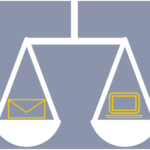A new decade is a big deal—and you can expect big things from digital marketing as we retire the 2010s and roll out the welcome mat for the 2020s. From influencer marketing and interactive content to streaming video and emerging technologies, the next wave of digital marketing trends aspires to connect innovative brands to the modern consumer. Here are the top digital trends for brands like yours to invest your time and resources for success in 2020.
(At Didit—a leading digital marketing agency in New York and Long Island—we empower brands just like yours every day with the next generation of marketing innovation.)
The micro-influencer emerges.
No marketer can deny the rise of the social media influencer—members of this elite group can bank up to $250,000 for a single Instagram post. However, many high-profile influencers expect special treatment—some collecting a check without delivering anything tangible in return.
As brands grow tired of the game, expect the typical celebrity endorser or internet superstar with millions of followers (read: Kim Kardashian) to lose momentum—and for the niche specialist with a smaller yet dedicated following to pick up the slack.
In 2020, digital marketing influencers will need more than just fame to create value for brands. Influencer marketing will instead evolve to become more personalized and authentic. Who can the next wave of brands depend on to move the needle and deliver more value for the money? The micro-influencer with a trusted voice and genuine influence on the decisions of others—especially the people in your target market.
How big will the influencer marketing channel grow? Huge. The market expects ad spend for influencer campaigns to reach $10 billion by 2020.
Advertisers push streaming video.
In 2019, video climbed the ranks to become one of the most powerful online mediums and a digital marketing must for brands from every industry. The stats tell the story:
- 74 percent of consumers watch streaming video content weekly
- 41 percent of consumers watch streaming video content daily
- 78 percent of digital video viewers will watch video ads in exchange for free content
What began on YouTube has exploded to encompass everything from live streaming platforms to social networks. Facebook Live, Instagram Live, and Twitter Periscope—built to encourage video sharing—reflect the growth of live videos, which get watched 3 times longer.
Advertisers already spend 25 percent more on their digital budgets year over year—and we are only witnessing the beginning of video’s power and reach.
Emerging technology goes big—and goes home.
5G’s faster internet speed, lower latency, higher capacity, and other enhancements will grow mobile usage dramatically in 2020. Expect leading manufacturers to push more 5G phones to meet consumer demand for the highly anticipated next generation of the mobile experience.
More emerging technologies include AI in all aspects of life including shopping, business, transportation, banking, healthcare, and especially AI content built to empower the personalized digital video.
Expect big things from AMAZON GO—Amazon’s high-tech retail store with a self-checkout station—as the company plans to open 3,000 stores across the country in the next two years.
In the home, Alexa, Siri, and Google Home will make voice search an everyday technology as the next generation of the Smart TV enables user interaction with streaming video ads.
The Internet of Things, which now connects 9 billion devices to the Internet, could connect another 11 billion in 2020 including smart home innovations. Household names like Alexa and Google Home will also meet competition from big players including Apple and Samsung.
Interactive content engages and converts.
As the more than 4 million blog posts published every day overcrowd the online marketplace, brands will need an edge to capture attention and stand out from the crowd. In 2020, interactive content will separate the standouts from the fall-behinds.
Content marketing—one of the leading ways for brands to find and engage target audiences—will shift to shoppable posts, augmented and virtual reality, 360-degree video, quizzes, and polls. Consider the top reasons to get excited about interactive content:
- Shareable, viral, and scalable. Easy to share on social media, interactive content encourages quick wins to help brands boost impressions, leads, and ROI. More than just viral, video content is scalable—for example, a giveaway or contest where entrants share your content to earn points. More shared content equals more brand exposure and more brand loyalty.
- Better SEO. Shareable content attracts natural link building opportunities, leading the pack of modern white-hat SEO strategies. Interactive content keeps website users lingering longer than static content—and higher dwell times signal Google to reward brands with higher rankings.
- Customer feedback. Reviews make or break the modern business. (Food for thought: more than half of consumers select a business based on reviews.) Surveys and polls give consumers painless and fun ways to offer real-time feedback brands can use to establish social proof and fine tune their marketing strategies based on data.
- More conversions. It’s the oldest trick in the conversions book: give users something to click. Interactive content builds a personalized, user-focused experience, boosting engagement and making consumers more comfortable taking the next step in the buyer journey.
- Customer education. Not every consumer wants to hear a sales pitch—some just want information. Interactive content that educates consumers adds value to your target audience in the way people learn best: through experiential learning where they can sample, test their knowledge, and receive feedback.
- Personalization. Interactive content creates a more personal and intimate experience where every customer has a voice. Rather than targeting customers as faceless entities without personalities, brands can approach them as individuals with specific needs, wants, and goals.
The rise of micro-moments.
Micro-moments happen when we turn to a device—often a smartphone—to act on whatever we need or want right now. In 2020, more users will turn to smartphones to make instant decisions about what to eat, what to buy, where to go, and more.
Micro-moment marketing success is no secret: show relevant ads at the right place, at the right time, to the right audience. Google’s advice is also simple: “Be there, be useful, and be quick.”
For digital marketing success, identify micro-moments, deliver relevant content at the customer’s “have to buy” moments, make the purchase easy, and measure the moments that matter. Focus on quality, relevance, and usefulness to reach impulsive consumers who act in the moment with high expectations and thin patience.
Marketers embrace social media stories.
More authentic than traditional posts, stories stay current but never outdated, empowering the live updates and real-time content the modern consumer demands. 98% of Instagram accounts use stories, with 500 million users sharing stories every day.
On the business side, modern brands on average share stories seven days a month (once every four days), with brands with more than 100,000 followers sharing stories more regularly (about every two days). One in three of the most-viewed Stories on Instagram are from businesses, and stories encompass 45% of Instagram ad spend.
64% of marketers will implement—or plan to implement—Instagram Stories into their social media strategy in 2020. Expect more brands to engage users with polls and other types of interactive content.
Brick-and-mortars will share location stickers in their stories, driving local traffic and discovery with hashtags for places or events. Brands will also link stories to traditional Instagram posts and share posts from other users to easily connect with other businesses.
Brands build content experiences.
Every piece of content conveys an experience—good or bad—through digital marketing elements including design, placement, and environment.
Think back to Coca-Cola’s viral “Share a Coke” bottle personalization campaign in 2011, which is still going strong today. Fans of the classic soda can personalize bottles with their name or a friend’s name or find their name on a bottle at a real-world store.
Consumers loved the idea and the campaign went viral after consumers posted pictures of themselves with their personalized drinks. Coke engaged its audience, motivated them to buy, and won the day.
In 2020, expect an even greater amalgamation of content and context. Holistic marketing focused on the whole user experience—especially the brand experience—will put control back in the hands of the marketer.
Find a digital marketing partner in 2020.
Didit—a pioneer of digital advertising and one of the largest independent marketing agencies dominating the northeast over the past 20 years—is your single, accountable, game-changing partner for all your marketing needs: both digital and traditional. Partner with us today and dominate your market over the next decade with one of the leading digital marketing companies in NYC, Long Island, and beyond.











![By Photograph: Frank C. Müller, Baden-Baden (Own work) [CC BY-SA 2.5 (http://creativecommons.org/licenses/by-sa/2.5)], via Wikimedia Commons](https://www.diditdm.com/wp-content/uploads/2015/08/opening-an-envelope-150x150.jpg)
![By User:Introvert (Own work) [CC BY-SA 2.5 (http://creativecommons.org/licenses/by-sa/2.5)], via Wikimedia Commons](https://www.diditdm.com/wp-content/uploads/2015/10/1024px-Sparkling-snow.sierra-150x150.jpg)